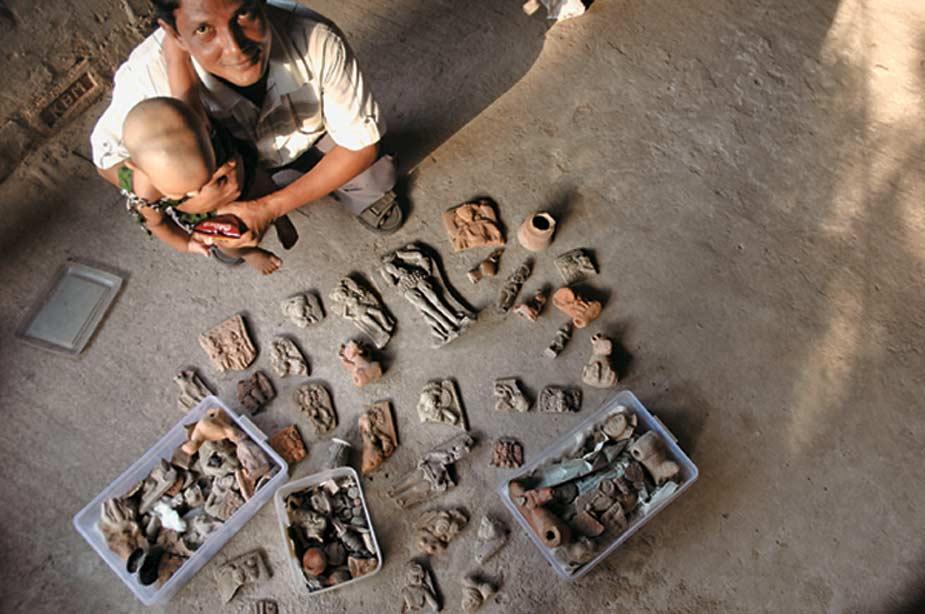Having walked to the end of a tall earthen fortification dating back many centuries, and
Excavated extensively by Calcutta University for a decade from 1956, when proof of an ancient civilisation spanning six periods from pre-Maurya to Pala was unearthed, but subsequently ignored, it is only recently that Chandraketugarh has returned to focus. The revival chorus has been led by the West Bengal Heritage Commission, the state’s department of archaeology and the Archaeological Survey of India. “Chandraketugarh can throw further light on the ancient history of Bengal and eastern India. It can push back the history of the region,” says Amal Roy, deputy director of the state’s department of archaeology.
The state government’s recent announcement of turning the area into a heritage zone and the Heritage Commission’s move towards getting Unesco certification for Chandraketugarh has come as some kind of commitment to protecting the future of a place with a 2,500-year-old past. The plan for a heritage village involves a careful recreation of the ancient ambience: mud houses, tiled roofs, an artefacts and visual aid museum, and so on. “The archaeology department had carried out excavations in Tilpi and Dhosa villages in neighbouring South 24 Parganas district from where a huge collection of artefacts were found. They are situated close to the Piyali river, which is connected to the Vidyadhari river which ran close to Chandraketugarh. There was a connected riverine civilisation for sure, but what we don’t yet know is if these people had trade relations with the rest of the world,” says Roy.
Pilferers got here first — artefacts from Chandraketugarh are reported to have been listed by international auctioneers. When first discovered by the British a century ago, these ruins were estimated to have spread across over 100 acres, says Shuvaprasanna, chairman of the West Bengal Heritage Commission. Human settlement over the years has made excavation impossible and, currently, the core identified area is not more than a third of an acre, he says.
Today, Chandraketugarh’s primary displays include the earthen ramparts that surrounded the settlement, the remains of a temple called Khanamihirer Dhipi and the local private museums of collectors such as Dilip Kumar Maite. While only sketchy historical information is provided at the sites, Maite’s modest collection of relics provides greater insights to seekers of ancient history.
The narrow dirt track from the Chandraketugarh ramparts, moving through a sparkling green countryside setting, leads to the home of another collector, Asad-uj Jamaan. (On the way, a villager accosts me, mistaking me for a buyer. “Give me your number,” he says, “I’ll inform you once new ‘dolls’ are found.”) Having registered his museum, Jamaan is building a room to house his collection of over 1,500 pieces. Till the room is ready, his collection of history lies bundled in sacks in a small dank room. When he brings out some pieces for viewing — terracotta and wooden figures of humans, animals and demons, along with earthen pottery — it is ample evidence of a place that some historians contend is “one of the richest treasure chests in Bengal”.
The information
Location Chandraketugarh is about 50km/2hrs by road via Barasat from Kolkata.
Leave a Reply
You must be logged in to post a comment.


